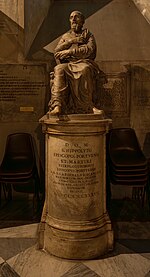Sapienza University of Rome
The Sapienza University of Rome (Italian: Sapienza – Università di Roma), also called simply Sapienza or the University of Rome, and formally the Università degli Studi di Roma "La Sapienza", is a public research university located in Rome, Italy. It is one of the largest European universities by enrollments and one of the oldest in history, founded in 1303. The university is one of the most prestigious Italian universities, commonly ranking first in national rankings and in Southern Europe. In 2018, 2019, 2021 and 2022 it ranked first in the world for classics and ancient history.Most of the Italian ruling class studied at the Sapienza. The Sapienza has educated numerous notable alumni, including many Nobel laureates, Presidents of the European Parliament and European Commissioners, heads of several nations, notable religious figures, scientists and astronauts. In September 2018, it was included in the top 100 of the QS World University Rankings Graduate Employability Ranking and in 2022 it was ranked best Italian University according to ARWU.
Excerpt from the Wikipedia article Sapienza University of Rome (License: CC BY-SA 3.0, Authors).Sapienza University of Rome
Viale Regina Elena, Rome Municipio Roma II
Geographical coordinates (GPS) Address Nearby Places Show on map
Geographical coordinates (GPS)
| Latitude | Longitude |
|---|---|
| N 41.903333333333 ° | E 12.515833333333 ° |
Address
Viale Regina Elena
00161 Rome, Municipio Roma II
Lazio, Italy
Open on Google Maps






